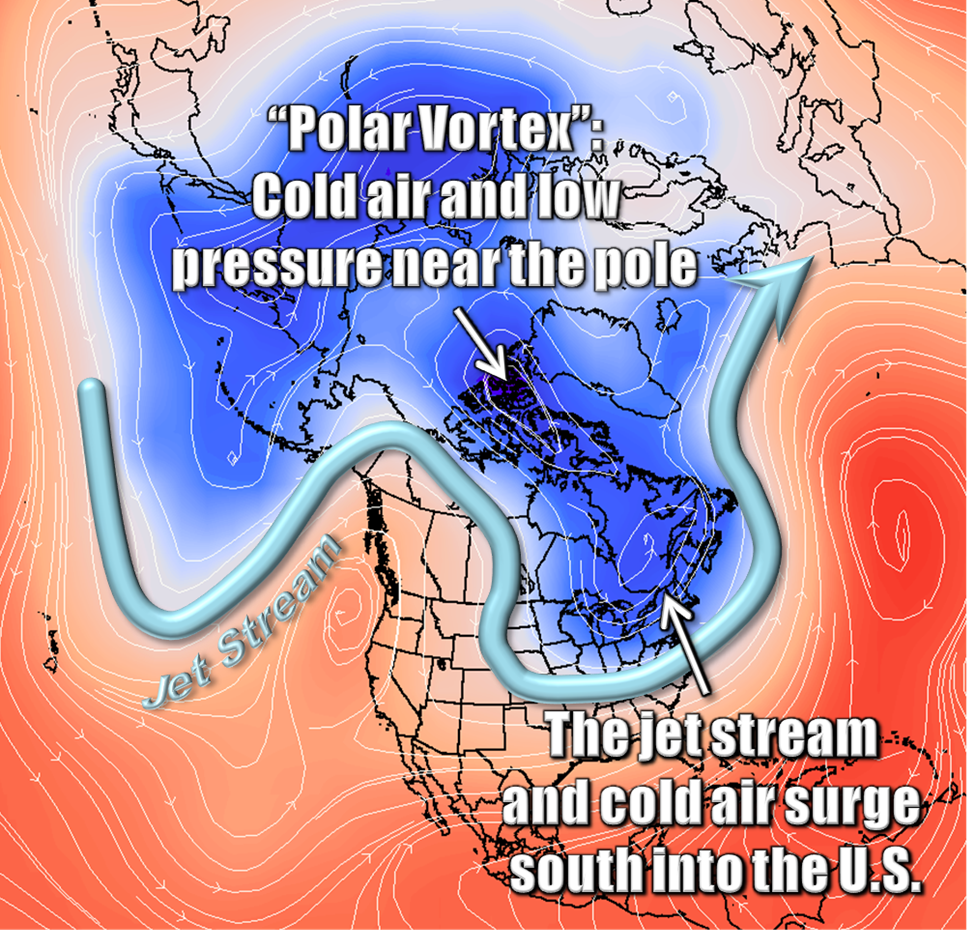
Lake effect snow will continue through Friday bringing significant snowfall to areas east to southeast of the Great Lakes. Snow squalls may impact New Year's Eve travel this evening and overnight across parts of the Great Lakes, Ohio Valley, Mid-Atlantic, and Upstate New York. Heavy rain will bring another flash flooding threat for southern California New Year's Eve into New Year's Day. Read More >
What is the Polar Vortex?
The polar vortex is a large area of low pressure and cold air surrounding both of the Earth’s poles. It ALWAYS exists near the poles, but weakens in summer and strengthens in winter. The term "vortex" refers to the counter-clockwise flow of air that helps keep the colder air near the Poles. Many times during winter in the northern hemisphere, the polar vortex will expand, sending cold air southward with the jet stream (see accompanying graphic). This occurs fairly regularly during wintertime and is often associated with large outbreaks of arctic air in the United States. The one that occurred during January 2014 is similar to many other cold outbreaks that have occurred in the past, including several notable colder outbreaks in 1977, 1982, 1985 and 1989.
However, there are several things t he polar vortex is not.
he polar vortex is not.
It is not something new. The term “polar vortex” has only recently been popularized, bringing attention to a weather feature that has always been present. It is also not a feature that exists at the Earth’s surface. Weather forecasters examine the polar vortex from looking at conditions tens of thousands of feet up in the atmosphere. However, when we feel very cold air from the Arctic regions at Earth’s surface, it is sometimes associated with the polar vortex. This is not confined to just the United States. Portions of Europe and Asia also experience cold surges that are connected to the polar vortex. By itself, the only danger to humans is the magnitude of how cold temperatures will get when the polar vortex expands, sending arctic air southward into areas that are not typically that cold.
In short, there is no cause to be alarmed when you hear about the polar vortex, but you should be prepared for colder temperatures. Check the forecast for your area on www.weather.gov so that you can make sure you are dressed appropriately. It is also a good idea to check the items in your home and car emergency kits at the beginning of each winter season to ensure you are prepared for any type of hazardous winter weather.